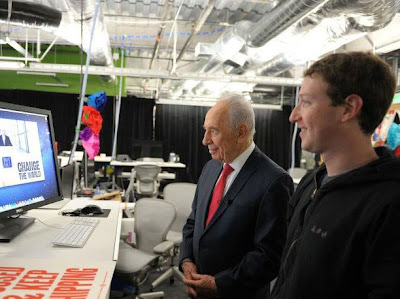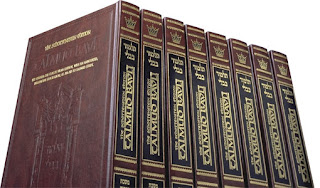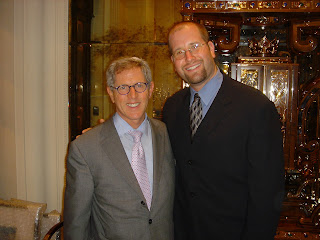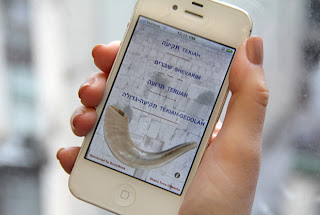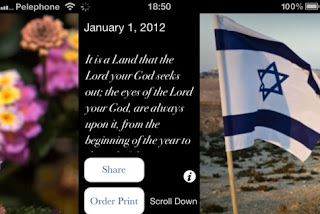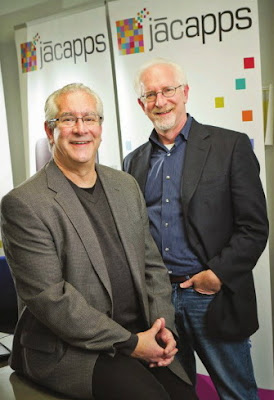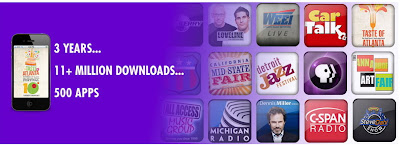As I walked around the recent International Consumer Electronics Show in Las Vegas, one thing was impossible to miss. Mobile applications are being integrated everywhere and into everything. Smartphones are no longer the only devices on which users are downloading their favorite apps.
2010 saw a proliferation of iPhones and Android phones on the market, and with that came a sharp rise in the number of mobile apps being downloaded. In 2011, we realized that we needed those apps on our tablets, computers and televisions. And 2012 will be the year we download apps to our automobiles as well.
One of the coolest new devices I learned about at the 2012 CES was Pioneer’s AppRadio 2. With its Advanced App Mode, Pioneer is able to bring AppRadio functionality to its line of auto navigation and DVD receivers. Its new AppRadio 2 supports Android devices as well as iPhones and iPads. Imagine having a seven-inch glass touch screen on your dashboard with the same multi-touch functionality of a tablet. This means we’ll soon be using our favorite mobile apps in the car (with caution, of course) to locate the closest restaurant, see the Yelp reviews, and then tweet an invitation to a few friends to meet for lunch.
Apps will also play a prominent role in the soon-to-be-released Windows 8 operating system. As more consumers add Smart TVs to their living rooms and home theaters, the number of mobile app downloads will continue to surge. For those who think the only place people are downloading apps is from Apple’s App Store, don’t fool yourself. Yes, there are now half a million apps in the Apple App Store, but Android is moving quickly to capture half of the worldwide smartphone market in 2012. The iPhone 4S, which began shipping last year, is a big hit, but Android’s new Ice Cream Sandwich is sure to excite as well.
More smartphones, tablets and smart TVs mean more Jewish- themed apps being created and available for download. Plus, one of the nice aspects of mobile apps is that they can be improved by the developer and updated instantly by the consumer. That means that some of the best Jewish apps from 2010 might be on the 2011 list as well, but be certain that there were noticeable upgrades.
This year’s lineup of the best Jewish apps includes (in no particular order) utilities, educational resources, games and novelties. Many apps designed specifically for either Apple or Android devices can, in fact, be downloaded on both.
This is far from an exhaustive list as there are hundreds of other Jewish apps available. Check out www.jewishiphonecommunity.org for a comprehensive listing of Jewish apps as they are released.
I-TORAH WITH ENGLISH FOR IPHONE & IPAD (CROWDED ROAD) – $16.99
This is a complete English translation of the Torah with options for full page or interlinear mode. Includes audio lecture for every portion, with both chapter mode and parsha mode. Users can jump to the weekly parsha with a single click. It is integrated with Torah commentaries from Rashi and Ramban (Nahmanides) and has a full keyword search.
TANACH BIBLE – HEBREW/ENGLISH BIBLE (DAVKA CORP.) – $2.99
It is the ideal study tool for the Hebrew and English Bible on your iPhone, iPod Touch, and iPad. Tanach Bible’s new version features crisp Hebrew text with precise placement of Hebrew vowels and cantillation marks, and verse-by-verse synchronization between Hebrew, English, and Rashi’s commentary.
SIDDUR/LUACH (RUSTY BRICK) – $9.99
Take your weekday siddur with you with this feature-packed Jewish prayer book. You’ll get every version of the Jewish prayer book and real time Zmanim will give you the prayer times for each day based on your location determined with the iPhone’s GPS. A Minyanim database will help you find the nearest prayer service. Also available for iPad.
I-NACH FOR IPAD (MAPLEWOODS ASSOCIATES LTD) – $9.99
iNach is the only iPad app focused on the Nevi’im (Prophets) & Ketuvim (Writings) of the Tanach. Featuring English translation & search, classic Jewish medieval commentaries and a user-interface designed exclusively for the iPad.
I-TORAH BLESSINGS (BEHRMAN HOUSE) – $1.99
This app will help you prepare for the next time you’re called to the Torah. Learn or practice the blessings before and after the Torah reading. Touch-n-Read technology lets you hear each word individually as you read along, and the auto-record feature lets you listen to yourself practice. Also includes the Shehecheyanu and parent blessings for a child, plus video demonstrations of putting on a tallit, and participating in the aliyah process.
JEWISH JOURNAL (TRIBE MEDIA CORP) – FREE
Jewish Journal is the first complete Jewish news app for the iPad.
TIKUN KORIM (RUSTY BRICK) – $19.99
Now you can practice for your bar mitzvah with an iPhone & iPad app that helps you learn to read your bar mitzvah parsha. The app is an interactive Tikun Korim. The Tikun works on both the iPhone and iPad and has many features to aid in learning your reading.
POCKET ISIDDUR (GP IMP) – FREE
This free iPod and iPhone version of the prayer book comes with every version imaginable, from Sephardic to Ashkenazic. The new version has adjustable font size. iPad version also available.
SHABBOS ALARM CLOCK (RUSTY BRICK) – $.99
Displays current time on screen. Set up to three alarms, which automatically shut off after a specified duration (10-50 seconds). Chose genuine alarm clock sound or vibrate. No snooze button function interferes with Shabbat rules.
ALEF BET FOR KIDS (RUSTY BRICK) – $4.99
The Alef Bet App works on the iPhone, iPod Touch and iPad devices and provides a fun, interactive learning experience for children. It helps them learn the Alef Bet through pictures, sound, animation, and interactivity. Each letter of the Alef Bet is accompanied by its Hebrew and English pronunciations, and by a picture of a word associated with it.
RAMBAM’S MISHNEH TORAH (JOSHUA MEIER) – $7.99
This app includes the entire Mishneh Torah including Maimonides’s introduction and his list of Mitzvot (commandments). The app includes the ability to search the entire Mishneh Torah. You can also bookmark different laws. Supports email sharing.
I-PHONE TALMUD DIRECTORY (TES) – $14.99
The complete Talmud dictionary from Marcus Jastrow with over 120,000 entries and bi-directional Hebrew-English and Aramaic-English references.
EICHAH/LAMENTATIONS (HEBREW IN HAND) – $.99
Fully-pointed Hebrew with English translation. Eichah (Lamentations) cries out through time, engulfing the reader in the loss of a city and her people. This ancient poem transcends history, connecting the human tragedy with a call to remember, and to renew faith.
HEBREW EMAIL (RUSTY BRICK) – FREE
Now you can type emails in Hebrew. This application will enable you to type both subject line and email body in Hebrew. It will then send the data directly into the iPhone’s mail application, for you to send to your contacts.
HEBREW BIBLE FOR ANDROID (IVRI) – FREE
Hebrew Bible application. Read/Search the whole Bible on the go.
HEBREW IN A MONTH FOR ANDROID (LEARN LIKE KIDS) – FREE
How to learn to understand the world — a question that has an answer! How can children learn a foreign language within half a year? And why does a regular person spend years of difficult studies on the same task? It’s all because of a certain skill that children aren’t aware of, and adults have forgotten.
TORAH FOR IPAD (RUSTY BRICK) – FREE
This Torah’s 248 columns (amudim) are magically stitched together on your iPad. The tools are provided to make finding the weekly Torah portion (Parsha), bookmarks (famous selections included) and a pointer (Yad). Dive into the ancient texts and experience it all on the Torah.
I-COMFORT (BEHRMAN HOUSE) – $1.99
This app teaches all the Jewish traditions, rituals, blessings, and prayers for the mourning process. iComfort can help you reach out with care and confidence to family or friends who have lost someone they love. If you have lost a loved one, iComfort can help you learn the Kaddish, and calculate the exact dates on which you should recite it.
I-PARASHAH (JACA SOFTWARE SOLUTIONS) – $4.99
This app gives you the weekly Torah portions in the palm of your hand. Search for any parsha by name or date with this app.
SHABBAT SHALOM FOR ANDROID (RUSTY BRICK) – FREE
The Shabbat application will allow you to quickly check the candle lighting times, Havdalah times and parsha for the week in any location in the world. This comes in handy when you quickly want to know when Shabbat is or if you want to know if it is too late to call your in-laws in Israel. Just flip through the different cities and countries, to see what the local time is and what time they start or finish Shabbat.
JEWISH ROCK RADIO (jacAPPS) – FREE
Jewish Rock Radio is the voice of Jewish youth featuring high-caliber, contemporary Jewish rock music with your favorite Jewish rock artists from the US, Israel, and beyond. JRR broadcasts fresh programming including interviews with Jewish youth from coast-to-coast sharing exciting ways they are engaging in Jewish life.
DAF YOMI+ (OKTM WEBSITES) – $4.99
Upgrade version of the free Daf Yomi with the option to choose Masechet (volume) and Daf (page).
ISRAEL365 (NOAH WEISZ) – FREE
This new app combines breathtaking photographs of Israel with inspiring Biblical passages describing the significance of the Holy Land. It features over 25 award-winning Israeli photographers and covers the width and breadth of the Promised Land.
JEW OR NOT JEW (JOHANN LEVY-J SOFT) – $1.99
While a similar version of this app was banned by Apple’s online App Store in France the developer clearly explains that this app is only intended for fun. This App puts together for you thousands of Jewish personalities and defines their Jewish background: Jewish mother, Jewish father or convert to Judaism.
YIDDISH DICTIONARY (DEEP POWDER SOLUTIONS) – $1.99
This application for the iPhone and iPod Touch is a dictionary-based application about Yiddish terms and words
*GAMES*
HEBREW TRIVIA (LUCIDEV) – FREE
Hebrew Trivia Game For Android Devices.
NOISEMAKE GRAGGER (BEHRMAN HOUSE) – FREE
This app is a virtual grogger on your iPhone. You can pick from different sounds or record your own and twirl your iPhone like a gragger to make noise. Remember to wait for Haman’s name.
THE BIBLE BOOCLIPS (CASTLE BUILDERS) – $2.99
Animated by The Kids Bible Company, the outstanding level of the animation of these videos appeals to children of all ages. This digital Bible book narrates unforgettable Biblical stories to children, using vivid animation, video clips and rich graphics from the Animated Kids Bible stories DVD series.
DREIDEL LABRYNTH (BEHRMAN HOUSE) – FREE
Navigate a ball through the labyrinth while collecting gelt and using the pinwheel to spin the dreidel. Collect and wager gelt as you compete. Earn an achievement for each board in the labyrinth. A different labyrinth appears for each letter on the dreidel.
I-HANUKKAH (BEHRMAN HOUSE) – FREE
Learn Chanukah blessings or refresh your memory with your own interactive Chaunkah. Touch-n-Read technology lets you read along and hear every word and sing along too. Record mode makes it easy to practice reading the Hebrew words and automatically saves your last recording.

